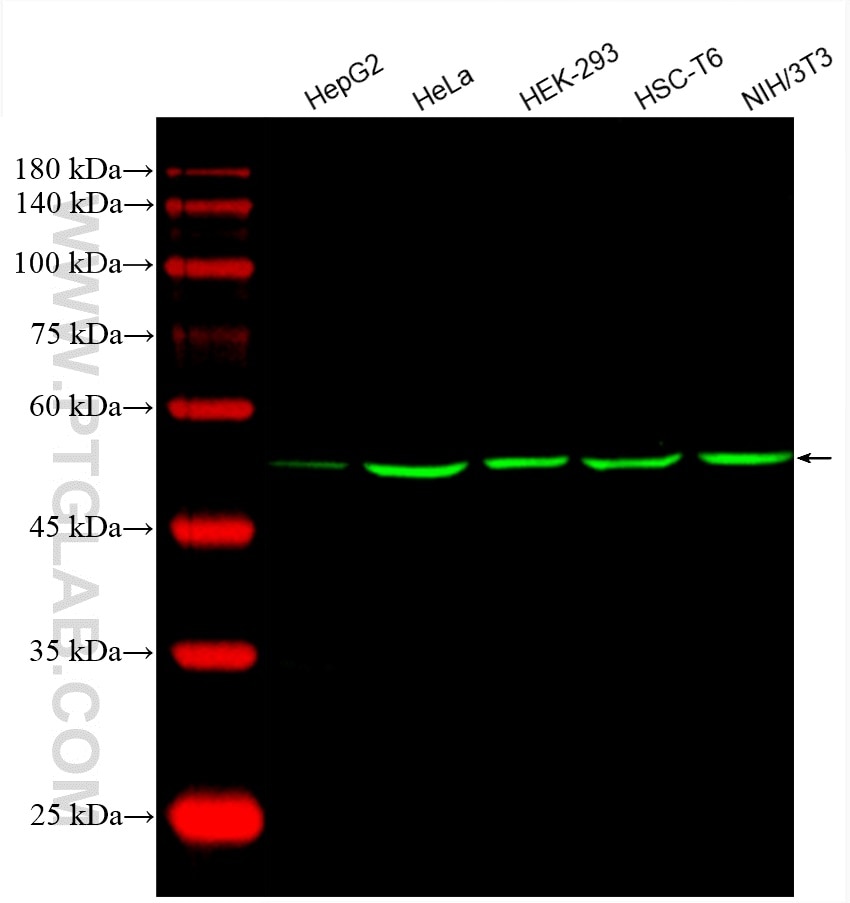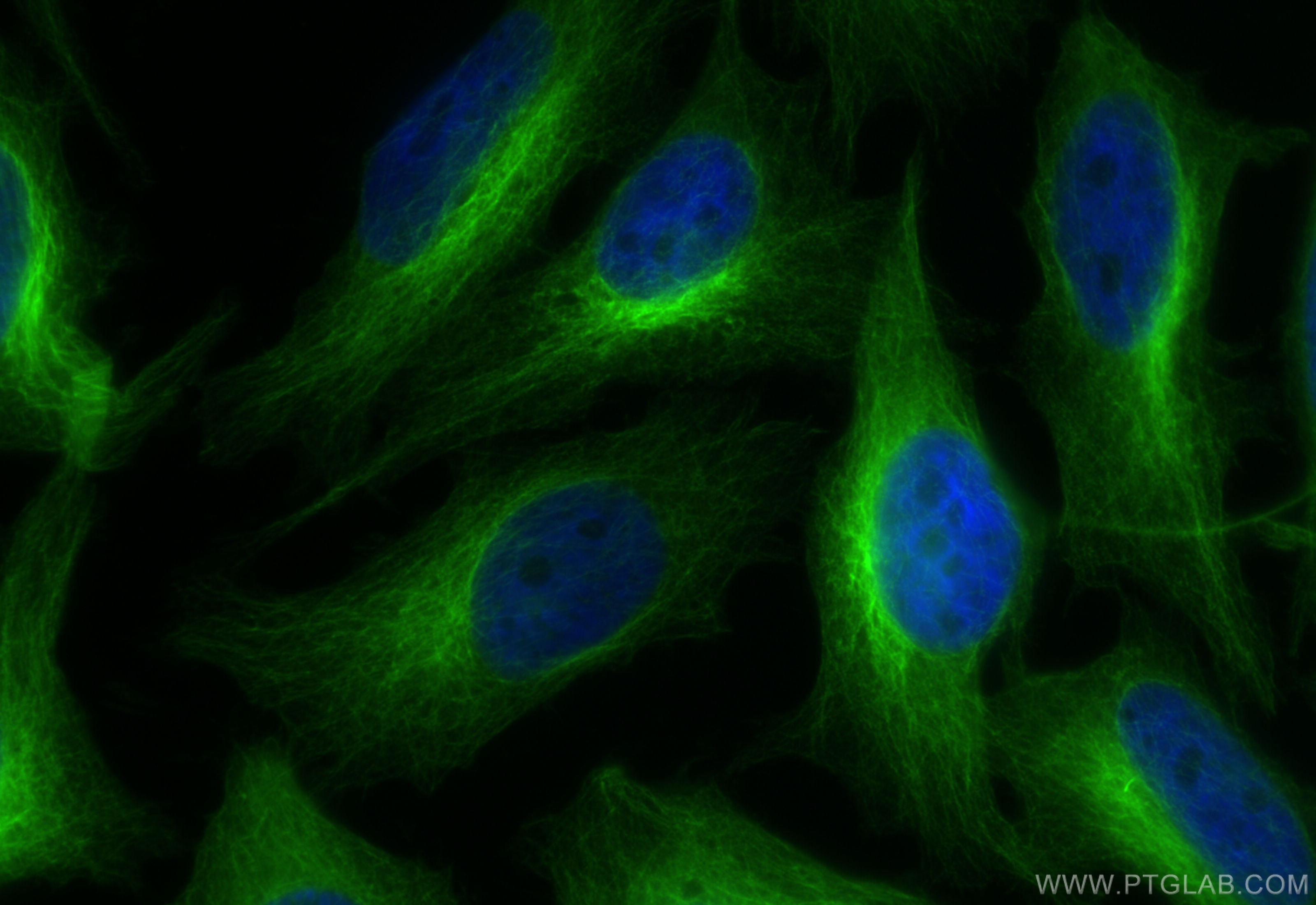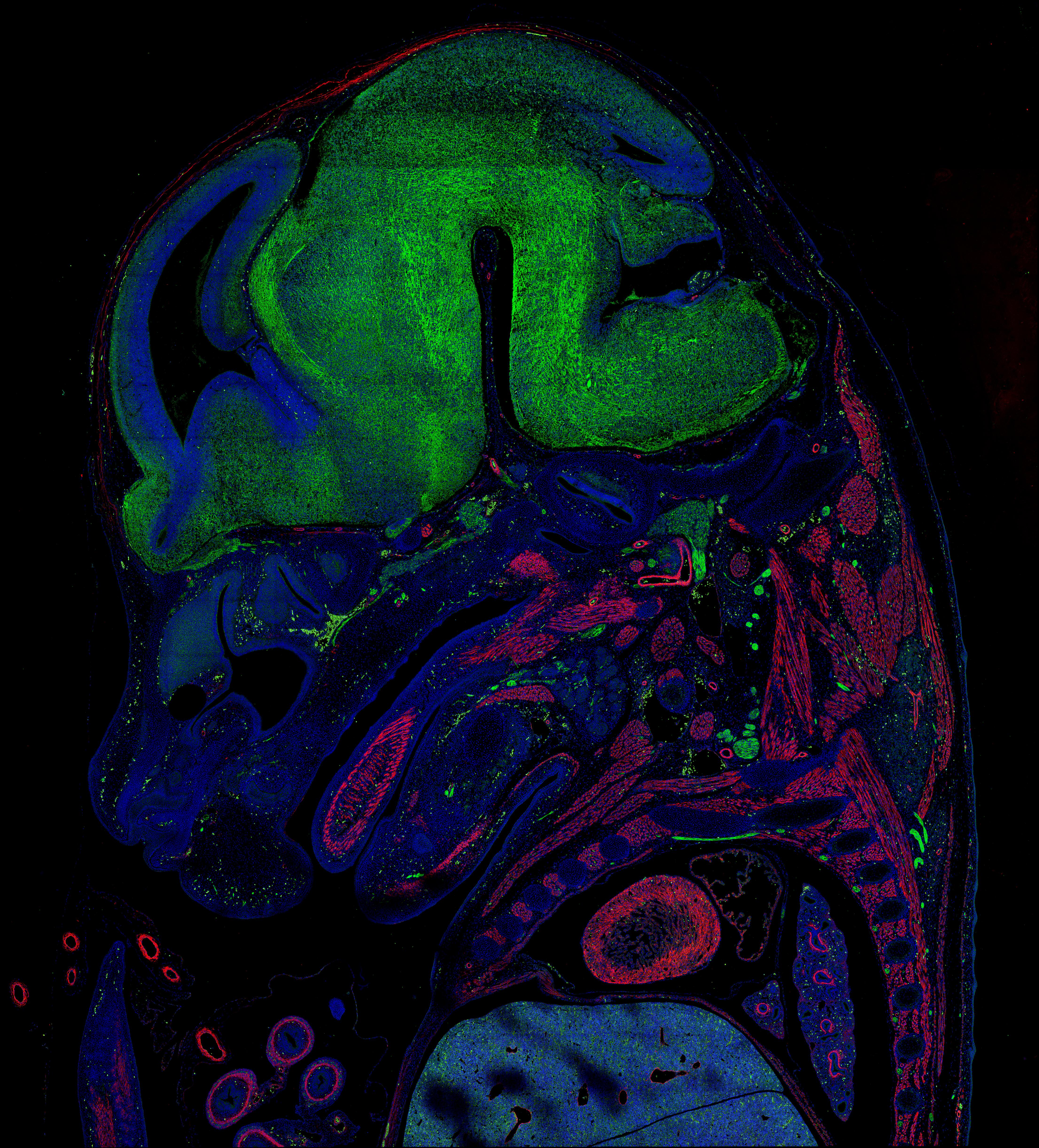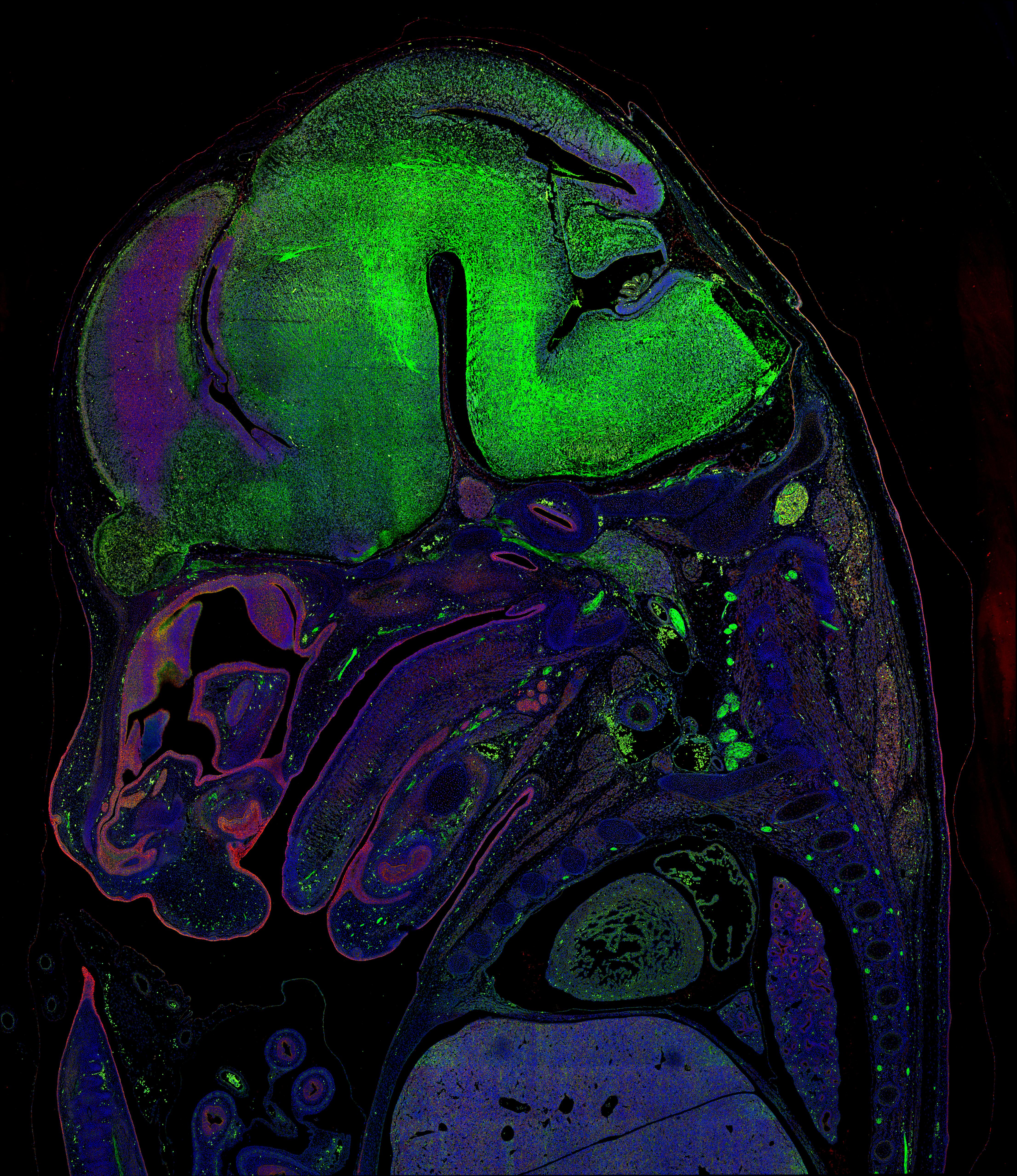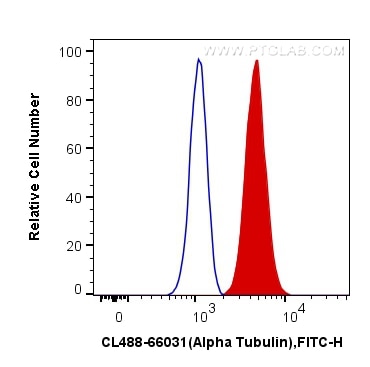- Featured Product
- KD/KO Validated
Alpha Tubulin Monoklonaler Antikörper
Alpha Tubulin Monoklonal Antikörper für WB, IF/ICC, FC (Intra)
Wirt / Isotyp
Maus / IgG2b
Getestete Reaktivität
human, Hund, Maus, Ratte
Anwendung
WB, IF/ICC, FC (Intra)
Konjugation
CoraLite® Plus 488 Fluorescent Dye
CloneNo.
1E4C11
Kat-Nr. : CL488-66031
Synonyme
Geprüfte Anwendungen
| Erfolgreiche Detektion in WB | HepG2-Zellen, HEK-293-Zellen, HeLa-Zellen, NIH/3T3-Zellen |
| Erfolgreiche Detektion in IF/ICC | HeLa-Zellen |
| Erfolgreiche Detektion in FC (Intra) | HeLa-Zellen |
Empfohlene Verdünnung
| Anwendung | Verdünnung |
|---|---|
| Western Blot (WB) | WB : 1:300-1:600 |
| Immunfluoreszenz (IF)/ICC | IF/ICC : 1:50-1:500 |
| Durchflusszytometrie (FC) (INTRA) | FC (INTRA) : 0.40 ug per 10^6 cells in a 100 µl suspension |
| It is recommended that this reagent should be titrated in each testing system to obtain optimal results. | |
| Sample-dependent, check data in validation data gallery | |
Veröffentlichte Anwendungen
| IF | See 4 publications below |
Produktinformation
CL488-66031 bindet in WB, IF/ICC, FC (Intra) Alpha Tubulin und zeigt Reaktivität mit human, Hund, Maus, Ratten
| Getestete Reaktivität | human, Hund, Maus, Ratte |
| In Publikationen genannte Reaktivität | human, Maus |
| Wirt / Isotyp | Maus / IgG2b |
| Klonalität | Monoklonal |
| Typ | Antikörper |
| Immunogen | Alpha Tubulin fusion protein Ag18034 |
| Vollständiger Name | tubulin, alpha 1b |
| Berechnetes Molekulargewicht | 50 kDa |
| Beobachtetes Molekulargewicht | 50-55 kDa |
| GenBank-Zugangsnummer | BC009314 |
| Gene symbol | Alpha Tubulin |
| Gene ID (NCBI) | 10376 |
| Konjugation | CoraLite® Plus 488 Fluorescent Dye |
| Excitation/Emission maxima wavelengths | 493 nm / 522 nm |
| Form | Liquid |
| Reinigungsmethode | Protein-A-Reinigung |
| Lagerungspuffer | PBS with 50% glycerol, 0.05% Proclin300, 0.5% BSA |
| Lagerungsbedingungen | Bei -20°C lagern. Vor Licht schützen. Nach dem Versand ein Jahr stabil. Aliquotieren ist bei -20oC Lagerung nicht notwendig. 20ul Größen enthalten 0,1% BSA. |
Hintergrundinformationen
There are five tubulins in human cells: alpha, beta, gamma, delta, and epsilon. Tubulins are conserved across species. They form heterodimers, which multimerize to form a microtubule filament. An alpha and beta tubulin heterodimer is the basic structural unit of microtubules. The heterodimer does not come apart once formed. The alpha and beta tubulins, which are each about 55 kDa MW, are homologous but not identical. Alpha tubulin is useful for scientists across fields as an internal control due to its high, ubiquitous expression pattern. Tubulin expression may vary according to resistance to antimicrobial and antimitotic drugs. This anitbody is CL488(Ex/Em 488 nm/515 nm) conjugated.
Protokolle
| PRODUKTSPEZIFISCHE PROTOKOLLE | |
|---|---|
| WB protocol for CL Plus 488 Alpha Tubulin antibody CL488-66031 | Protokoll herunterladen |
| IF protocol for CL Plus 488 Alpha Tubulin antibody CL488-66031 | Protokoll herunterladen |
| STANDARD-PROTOKOLLE | |
|---|---|
| Klicken Sie hier, um unsere Standardprotokolle anzuzeigen |
Publikationen
| Species | Application | Title |
|---|---|---|
Free Radic Biol Med Iron overload modulates follicular microenvironment via ROS/HIF-1α/FSHR signaling | ||
Clin Genet A novel homozygous CFAP65 mutation in humans causes male infertility with multiple morphological abnormalities of the sperm flagella. | ||
Transl Androl Urol Novel bi-allelic mutations in DNAH1 cause multiple morphological abnormalities of the sperm flagella resulting in male infertility. | ||
Reprod Toxicol Bisphenol M inhibits mouse oocyte maturation in vitro by disrupting cytoskeleton architecture and cell cycle processes | ||
Am J Physiol Cell Physiol Melatonin partially rescues defects induced by tranexamic acid exposure during oocyte maturation in mice |
Rezensionen
The reviews below have been submitted by verified Proteintech customers who received an incentive for providing their feedback.
FH Pierre (Verified Customer) (09-24-2025) | Worked well
|
